OPEN HOURS:
Tuesday - Saturday 11AM - 6PM
Close on Sunday, Monday and Pubilc Holidays
For more information: info@sac.gallery

(English is below)
ไทกิ ศักดิ์พิสิษฐ์ เป็นทั้งผู้กำกับภาพยนตร์ ศิลปินทัศนศิลป์ รวมถึงอาจารย์ด้านภาพยนตร์ในหลายมหาวิทยาลัย
ในแวดวงภาพยนตร์ ชื่อของเขาน่าจะผ่านหูผ่านตาใครหลายคน ด้วยความสามารถและรางวัลการันตีจากผลงานภาพยนตร์ขนาดสั้นและยาวหลายชิ้น ทั้งเวทีในและต่างประเทศ
อุรุเวลา, The Age of Anxiety, Shadow and Act, ภูเขาไฟพิโรธ และ พญาโศกพิโยคค่ำ คือบางส่วนของผลงานที่คุณต้องเคยได้ยินชื่อมาบ้าง
สิ่งที่เปรียบเสมือนลายเซ็นของไทกิ ในงานที่ผ่านๆ มา คือการสลายเขตแดนของสื่อหลายชนิด และผนวกรวมเนื้อหาข้อมูลจากหลากแขนง มาสร้างสรรค์เป็นภาพยนตร์ วิดีโออาร์ต ภาพถ่าย ฯลฯ เพื่อนำเสนอเรื่องราวที่เราคุ้นเคยแต่อาจละเลยหลงลืม ด้วยภาษาศิลป์ในแบบฉบับไทกิอย่างน่าสนใจ
พฤษภาคม พ.ศ. 2566 หนึ่งปีก่อนหน้า ช่วงเวลาที่ความฝัน ความหวัง กำลังปะทุ เขาคุยกับเราถึงความสนใจ เชื้อไฟ ในการปลูกปั้นนิทรรศการเดี่ยวครั้งที่ 3 ที่เอส เอ ซี แกลเลอรี (SAC Gallery)
พฤษภาคม พ.ศ. 2567 ไม่กี่วันหลังเปิดนิทรรศการเดี่ยวครั้งใหม่ที่ว่า เราชวนไทกิมาพบกันอีกครั้ง นั่งลงคุยถึงที่มาที่ไป แนวคิด วิธีการทำงาน รวมถึงวัตถุดิบต่างๆ ที่นำมาถ่ายทอดเป็นวิดีโอและศิลปะจัดวางใน Dark Was the Night-ผีพุ่งไต้ ผลงานล่าสุดของเขา เพื่อพาตัวเองเข้าสู่อาณาจักรความนึกคิดของ ไทกิ ศักดิ์พิสิษฐ์ ให้เรา “รู้สึก” ละเมียดสัมผัสถึงความสัมพันธ์ระหว่างเหตุการณ์ 6 ตุลาฯ ความผูกพัน ครอบครัว ความทรงจำ การจากพราก ความรวดร้าว และดวงดาว มากกว่าจะต้อง “เข้าใจ” จักรวาลของ ไทกิ ศักดิ์พิสิษฐ์
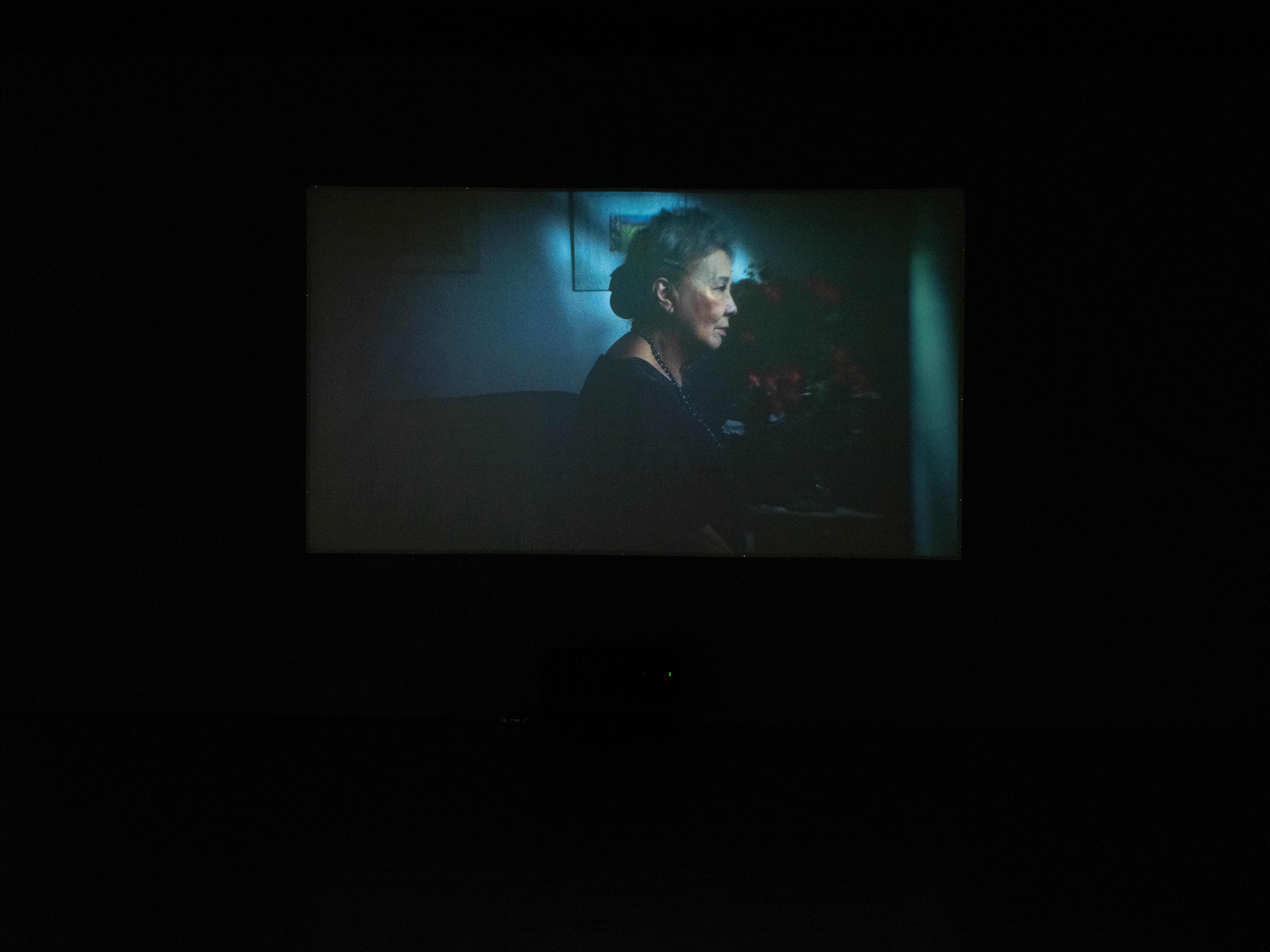
Dark Was the Night
บางส่วนของบทนำบนกำแพงด้านหนึ่งของนิทรรศการนี้อ้างถึงเหตุการณ์ครั้งสำคัญของมวลมนุษย์โลกในปี 1977 เมื่อองค์การนาซาส่ง “แผ่นเสียงทองคำ” ส่วนหนึ่งของโครงการวอยเอเจอร์ บรรจุเสียงจากโลกมนุษย์ ทั้งเสียงจูบ เสียงหัวใจเต้น เสียงทักทายหลากภาษา และหลายบทเพลง ขึ้นสู่จักรวาล หวังให้ภารกิจนี้เป็นการสื่อสารระหว่างมนุษยชาติกับอารยธรรมอื่นนอกโลก
หากคุ้นเคยกับงานของไทกิ เขามักแฝงการเมืองในงานอยู่บ่อยครั้ง แล้วเหตุใดงานครั้งนี้จึงเชื่อมโยงไปถึงภารกิจจักรวาลที่เกิดขึ้นคนละซีกโลก ขณะที่เวลาก็ผ่านมานานเกินครึ่งศตวรรษ หลายคนที่เกิดทันอาจลืมเลือนเรื่องราวนี้ไปแล้ว และอีกมากมายที่เพิ่งลืมตาดูโลก แน่นอนว่าเรื่องนี้แทบไม่อยู่ในความนึกคิด
“ผมแค่ตั้งข้อสังเกต เชื่อมโยงกับโลกอีกฟากหนึ่ง ในช่วงเวลาสงครามเย็น ที่หลายประเทศพยายามแข่งขันกันเรื่องวิวัฒนาการทางอวกาศ วิสัยทัศน์ของเขาคือพยายามจะสื่อสารกับสิ่งมีชีวิตนอกโลก ผมมองว่าเขาเอาคุณค่าทางศิลปะและดนตรีมาเป็นตัวอย่างให้เห็นว่า นี่คือสิ่งสวยงามของมนุษย์ที่ถูกสร้างสรรค์ขึ้นมา ไม่ใช่สงคราม ไม่ใช่อาวุธ
“มนุษย์มีวิวัฒนาการ สามารถแต่งสิ่งนี้ได้ ถ่ายทอดความรู้สึก ความสวยงามของมนุษย์ มันก็คือการสรรเสริญศิลปะ ซึ่งสวยงามมาก”
ทว่าแค่ 1 ปีก่อนหน้านั้น การออกเสียงในประเทศไทยกลับเป็นสิ่งต้องห้าม เหตุการณ์ 6 ตุลาฯ เกิดขึ้นกลางเมืองหลวง นักศึกษาผู้บริสุทธิ์ถูกเข่นฆ่า เพียงเพราะพยายามจะส่งเสียงพูดบางสิ่ง กลายเป็นแผลเรื้อรังในประวัติศาสตร์ที่ยังฝังแน่นอยู่ในความทรงจำของชาติและผู้ที่อยู่ในเหตุการณ์กระทั่งปัจจุบัน
“แต่ในขณะเดียวกัน ผมเปรียบเทียบว่า ปี 1976 นักศึกษาพยายามจะสื่อสารจุดยืนทางการเมือง คุณค่าของอิสรภาพ คุณค่าของการพูดได้ว่า ตัวเองรู้สึกอย่างไร แสดงความคิดเห็นได้ มันคืออะไร คุณค่าความเป็นมนุษย์ขั้นพื้นฐาน แค่พูดออกมา ก็ยังถูกกล่าวหา ยัดเยียดโฆษณาชวนเชื่อ และฆ่าอย่างโหดเหี้ยม”
ในทศวรรษเดียวกัน แต่คนละฟากโลก วันนั้นเสียงทำงานต่างกันถึงเพียงนี้
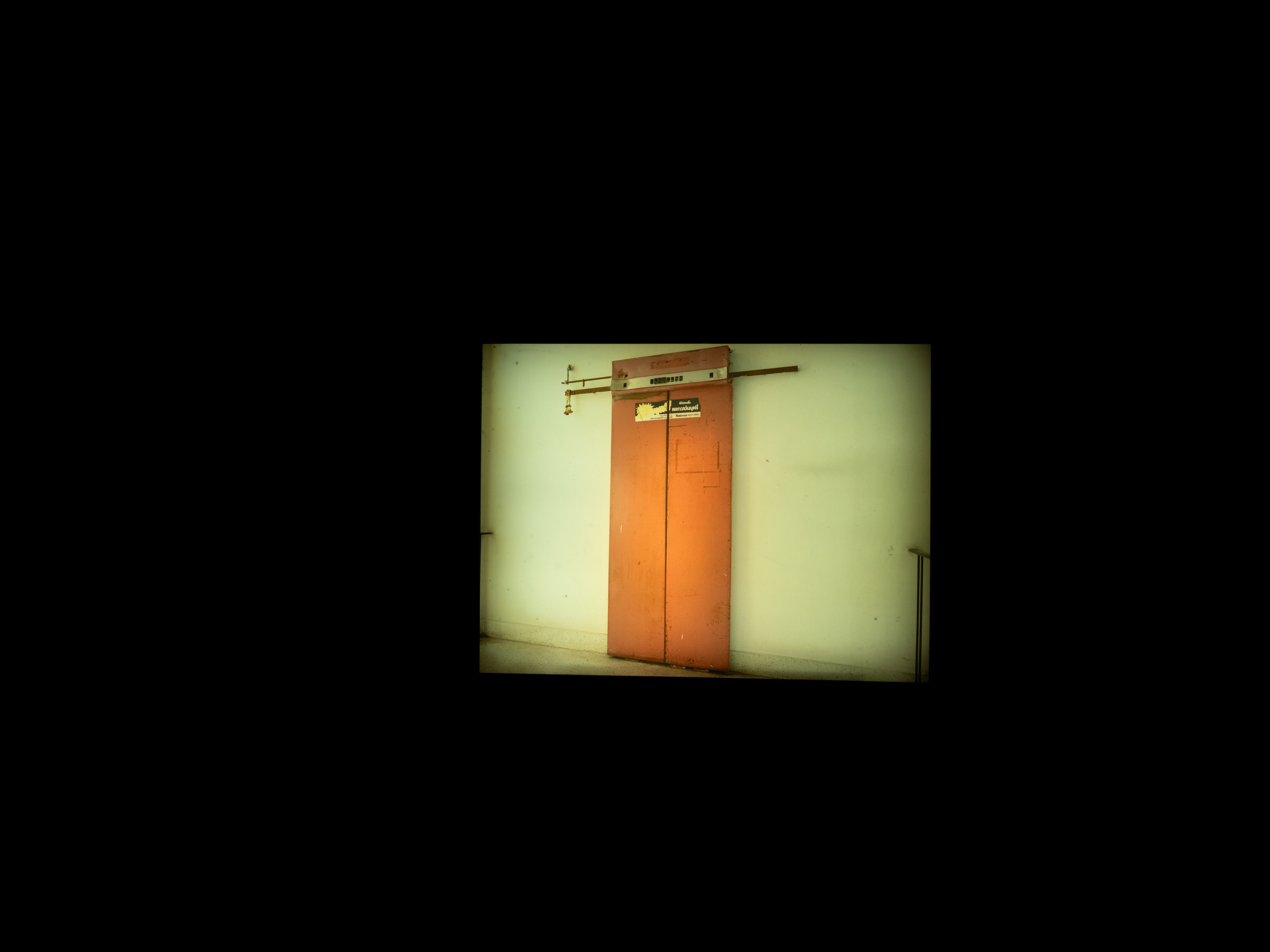
Hypnagogia
กลางเดือนพฤษภาคม ช่วงนี้เมื่อปีที่แล้ว ความหวังของการเมืองไทยสุกไสวในใจของผู้คน คล้ายแสงแห่งหวังที่ปลายอุโมงค์ แต่ไม่ทันไรกลับมืดดับลง จากสว่างกลับเข้าสู่ภาวะอนธการ หยุดนิ่งเหมือนเป็นอัมพาต ไร้การเคลื่อนไหว ไม่ต่างจากท้องฟ้ายามสุริยุปราคา
ร่วมกับความรู้สึกของเพื่อนร่วมชาติคนอื่นๆ ความคับแค้นแน่นสุมในอก หลังจากการตั้งรัฐบาลของผู้ชนะการเลือกตั้งไม่สำเร็จจากนานาปัญหา ตอนนั้นไทกิอยากสร้างสรรค์ผลงานสักชิ้นหนึ่งเพื่อบอกเล่าความรู้สึก และส่วนหนึ่งอยากระบายความเจ็บปวดในจิตใจออกมา
“ตอนนั้นงานมีความดุเดือดมากกว่านี้” ศิลปินเผยอย่างเปิดอกถึงคอนเซปต์ผลงานในตอนนั้น ที่เต็มไปด้วยความรวดร้าว และการตั้งคำถามต่อความอยุติธรรม
ทว่าพอเวลาผ่านไป ความรู้สึกเริ่มตกผลึก จากความโกรธเคืองแปรเปลี่ยนเป็นเรื่องของความเป็นมนุษย์มานำหน้า ความรัก ความผูกพัน และการพรากกันของคนในครอบครัว สิ่งธรรมดาทั่วไปของมนุษย์ถูกนำมาแทรกอยู่ในเหลี่ยมมุมต่างๆ ของงาน
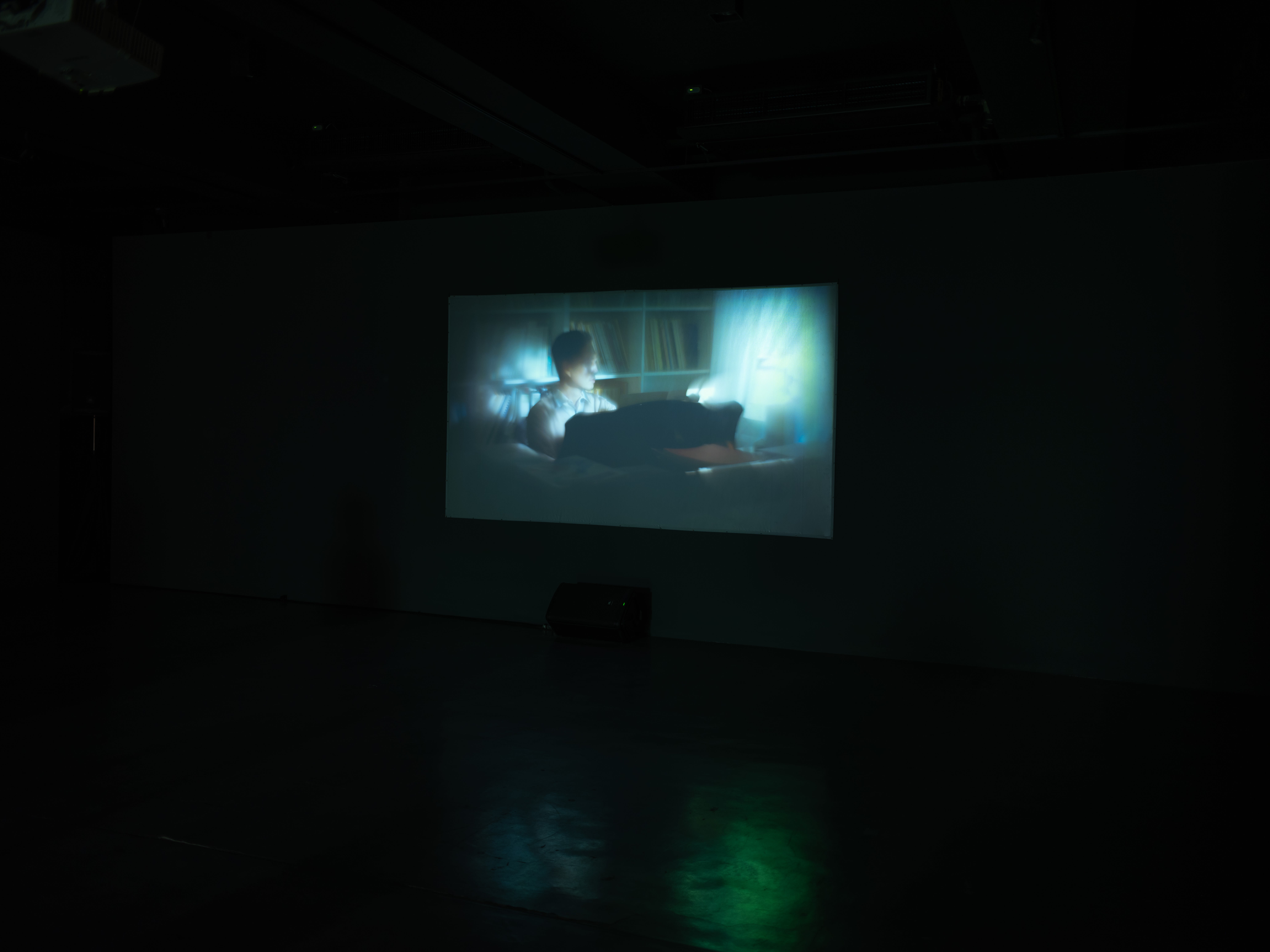
ดังนั้น ความเป็นการเมืองระดับชาติจึงค่อยๆ กลายมาเชื้อเชิญผู้ชมพิจารณาถึงการเมืองในหน่วยเล็กๆ อย่างครอบครัว โดยมี ครูดุษฎี พนมยงค์ บุญทัศนกุล ลูกสาวของ ปรีดี พนมยงค์ รัฐบุรุษคนสำคัญของไทย มาแสดงเป็นตัวละครในเรื่อง ซึ่งแน่นอนว่า ไทกิยังตกค้างแรงบันดาลใจจากหนังสือ สันติปรีดี เรื่องราวเกี่ยวกับครอบครัวปรีดี ที่เคยส่งแรงให้เขาสร้างภาพยนตร์ขนาดยาวเรื่องแรกอย่าง พญาโศกพิโยคค่ำ เมื่อหลายปีก่อน
“ผมสนใจในสภาวะของการที่หลายอย่างถูกควบคุมโดยอำนาจที่มองไม่เห็น โดยพลังงานที่มันใหญ่กว่า อย่างงานนี้ก็เป็นพลังงานของดวงดาว ของจักรวาล
“แต่อันนี้มีผลต่อจิตวิทยา ต่อสภาพจิตใจของคนอย่างไร การที่แสงมันเคลื่อนที่แล้วอยู่ๆ ท้องฟ้ามืด พระอาทิตย์หายไป มันมีผลต่อความรู้สึกอย่างไร ก็คืออำนาจที่มันใหญ่กว่าคนตัวเล็กๆ ผมสนใจเรื่องพวกนี้ ผัสสะของมนุษย์ รูป รส กลิ่น เสียง สัมผัส การที่ปรากฏการณ์ทางธรรมชาติเปลี่ยนแปลง แล้วมันมีผลกระทบต่อจิตใจของตัวละคร หรือของสิ่งต่างๆ

“เราแค่หยิบครอบครัวนี้มามีส่วนร่วมในงาน แต่จริงๆ มันมีผลกระทบต่อครอบครัวทุกครอบครัว มันเป็นจักรวาล มันจะเป็นครอบครัวไหนก็ได้ เป็นใครก็ได้ เวลาที่ผู้มีอำนาจหรือสิ่งที่ยิ่งใหญ่มีอำนาจกำหนด แล้วเราควบคุมมันไม่ได้ ถึงเราจะพยายามแล้วนะ แต่เราก็ถูกปกคลุมด้วยอำนาจนี้”
Dream
ส่วนประกอบสำคัญในแทบทุกงานภาพยนตร์ของไทกิคือ “เสียง” ที่นำดนตรีหลากหลายแนวมาเป็นตัวแทน ประกอบสร้างซาวนด์จากหลายที่มา เพื่อนำผู้ชมสำรวจห้วงความคิดและคอนเซปต์ในแต่ละงาน
“มนุษย์มีความไวต่อเสียงมากกว่าตาเสมอ เราจึงตอบสนองต่อเสียงนั้นๆ ได้มากกว่าสายตา” ศิลปินเล่า “ทุกครั้งเมื่อผมคิดงานใหม่ ผมจะฟังเพลง จริงๆ ฟังเพลงอยู่ตลอดเวลาอยู่แล้วล่ะ แต่เราจะรู้ว่าช่วงนั้นเราชอบอะไรเป็นพิเศษ เอาอะไรกลับมาฟังบ่อยๆ สิ่งเหล่านี้มักจะเป็นแรงบันดาลใจที่ดี”
จากวงดนตรีแนว Drone Metal อย่าง SUNN O))) ที่มีเอกลักษณ์คือเสียงเบสหนักหน่วงหนืด ลากเสียงยาวเหมือนดนตรีไร้จังหวะ สะเทือนเข้าไปสู่โสตประสาท คล้ายกำลังดูดผู้ฟังเข้าสู่ภวังค์ลึกลับ ซึ่งเป็นเหมือนตัวแทนเสียงหัวใจและอารมณ์ของเขาเมื่อปีที่แล้ว มาสู่ดนตรีแบบ Dream Pop และ Shoegaze ที่ซอฟต์ลง โทนดนตรีล่องลอยคว้าง ให้ความรู้สึกราวกับตกอยู่ในความฝัน โดยมีเสียงดนตรีจากวง Cocteau Twins, This Mortal Coil หรือ My Bloody Valentine เป็นเสมือนธีมตั้งต้นมาต่อยอดในการทำงานครั้งนี้
“พอเรามีศูนย์กลางตรงนี้ ทำให้เราคิดวิชวลกับเสียงต่างๆ นานาง่ายขึ้น เรารู้ว่าอารมณ์ต้องประมาณนี้ มันเป็นวิชวลที่เราต้องการจะถ่ายทอดออกมา ต้องเป็นลักษณะที่ออกมาจากเพลงแบบนี้”
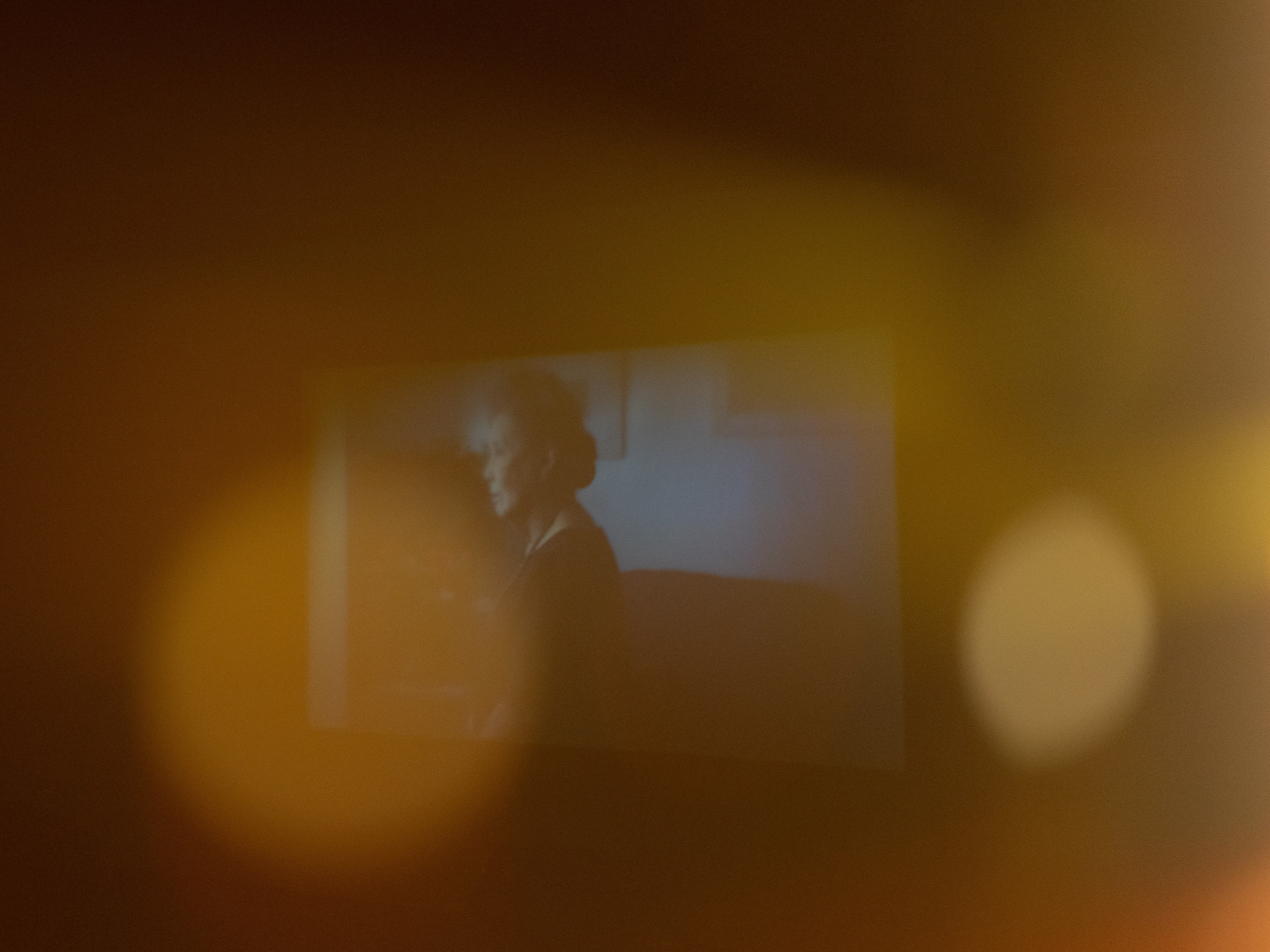
ขณะที่ชื่อของนิทรรศการอย่าง Dark Was the Night เขานำมาจากหนึ่งในเพลงที่ส่งไปพร้อมกับแผ่นเสียงทองคำในโครงการวอยเอเจอร์ ผลงานเพลงบลูส์ไร้เนื้อร้องของ วิลลี จอห์นสัน นักร้องผิวดำตาบอด ที่มีเพียงเสียงโอดครวญ ฮัมไม่เป็นภาษาล้อไปกับทำนอง แต่ไทกิมองว่า สิ่งนี้คือการถ่ายทอดความรู้สึกได้ดีกว่าตัวอักษรที่ถ่ายทอดเป็นเสียง เป็นท่วงทำนองที่เจือความเศร้าของคนผิวดำที่เกิดมาในช่วงที่ยังมีการเหยียดผิวสูง
และรวมถึงบางเพลงของวง Cocteau Twins ที่นักร้องนำก็ร้องไม่เป็นภาษา แต่ผู้ฟังกลับรับรู้ถึงบางความรู้สึกที่ศิลปินต้องการสื่อ เหล่านี้คือสิ่งที่อัศจรรย์มากสำหรับเขา
“การที่เราฟังไม่ชัด ทำให้มันไม่ได้มีคำตอบเดียว ผมว่ามันเป็นสุนทรียศาสตร์ที่ผมชอบที่สุดแล้ว มันตีความได้เยอะมาก และมันไร้กาลเวลา มันไม่ได้ให้คำตอบคุณแบบเดียว มันให้แค่ตั้งคำถาม แต่คำตอบจะมาจากคนฟังหรือคนที่ดูงานเอง และพอเรามีคำตอบ ณ ปีนี้ อีก 5 ปีต่อไป เราอาจจะมีอีกคำตอบหนึ่งก็ได้”
เมื่อได้แนวเสียงแบบ Dream Pop มาเป็นตัวนำวิชวลในใจไทกิจึงค่อยๆ ก่อร่างสร้างภาพออกมาเป็นความไม่ชัดเจน ที่ทับซ้อนล่องไหลคล้ายกับกำลังอยู่ในภาวะกึ่งหลับกึ่งตื่น จังหวะพอดีกับที่พบเลนส์ที่ผลิตในยูเครนอย่าง HELIOS 44-2 ซึ่งมีคุณสมบัติเอาต์ออฟโฟกัส ทำให้ภาพที่ออกมาเป็นภาพเบลอ ตอบโจทย์ในการถ่ายทอดเรื่องราวความฝัน กึ่งหลับกึ่งตื่น และสภาพโลกที่ทับซ้อนกัน ที่เขาตั้งข้อสังเกตว่า สิ่งเหล่านี้มักมาในความคิดของมนุษย์เราแบบไม่ชัดเจน บ้างมาเป็นช่วง บ้างเป็นชิ้น ไม่ปะติดปะต่อ
งานครั้งนี้ไทกิจึงตั้งใจให้เสียงเป็นตัวนำ แล้วให้ภาพจากวิดีโอที่เห็นในจอค่อยๆ ทำงานกับภาพในสมอง และเมื่อนั้นทั้งภาพและเสียงอาจพาเรานึกถึงเหตุการณ์ที่เพิ่งผ่านมา หรือเชื่อมโยงกับเหตุการณ์ในอดีตของเรา คล้ายกับเป็นการรำลึกความหลัง
“บางทีภาพที่เราเห็นไม่ใช่ภาพที่เกิดขึ้นต่อหน้า มันอาจเป็นภาพของยายเราในอดีต หรือภาพในความทรงจำ เป็นสองหนังในเรื่องเดียวกัน คือภาพที่อยู่ข้างหน้ากับภาพที่อยู่ในหัว”

นอกจากวิดีโอสองจอฉายภาพพร่ามัวทับซ้อน เมื่อรวมกับซาวนด์ไม่คุ้นหูจากฝีมือของ จิน-วรเมธ มาตุธรรมธาดา Sound Artist ที่ออกแบบเสียงให้กับงานของไทกิมาหลายชิ้น ผสานกับงานศิลปะประกอบต่างๆ ไม่ว่าจะเป็นภาพถ่ายที่พรินต์บนกระดาษเงินเมทัลลิกชนิดพิเศษ ภาพพิมพ์โลหะรูปดาราจักร ประติมากรรมวงโคจร และ Light Box ทั้งหมดนี้ร่วมกันประกอบสร้างและช่วยเติมเต็มให้เนื้อหาในงานครั้งนี้กลมกล่อมขึ้น
“วัตถุต่างๆ ก็มีเสียงเหมือนกัน จินไม่ได้ออกแบบเสียงให้แค่เฉพาะวิดีโอ เขาออกแบบเสียงให้กับอาร์ตเวิร์กทุกชิ้น ถ้าเราไปดูประติมากรรมที่มันเคลื่อนที่ แล้วมีซาวนด์ประกอบ มันก็คือส่วนเดียวกัน คืออันหนึ่งอันเดียวกัน คือชิ้นงานชิ้นเดียวกัน เสียงมันเดินทางไปตรงนั้นเหมือนกัน โดยเฉพาะในแกลเลอรีตรงนี้ ผมว่าเสียงก็เป็นเสียงเฉพาะหนึ่ง และถ้ามันถูกไปใช้ที่อื่น เสียงมันก็เปลี่ยนไปเหมือนกัน”
งานแต่ละครั้งของไทกิเป็นเสมือนงานสั่งทำพิเศษที่ตัดให้พอดีตัว ออกแบบโดยพิจารณาบริบทด้านสถานที่ให้เข้ากับผลงานที่สร้างสรรค์ขึ้น ทั้งในแง่ของประวัติศาสตร์และเรื่องราวที่อบอวลอยู่ในที่นั้น หากวิดีโอชิ้นเดียวกันไปฉายต่างที่ออกไป การรับรู้ของผู้ชมก็เปลี่ยนไปด้วย
“เราพยายามทำให้งานเป็นบทสนทนากับสถานที่นั้นๆ ตอนนี้อยู่ในร่าง SAC Gallery เราก็ตัดให้มันเข้ากับสัดส่วน พอมันไปอยู่อีกที่หนึ่งก็ไปตัดใหม่ ไปดูว่าสเปซนั้นเป็นยังไง แล้วก็ตัดออกมา” ไทกิเล่าถึงความพิเศษของผลงานนี้
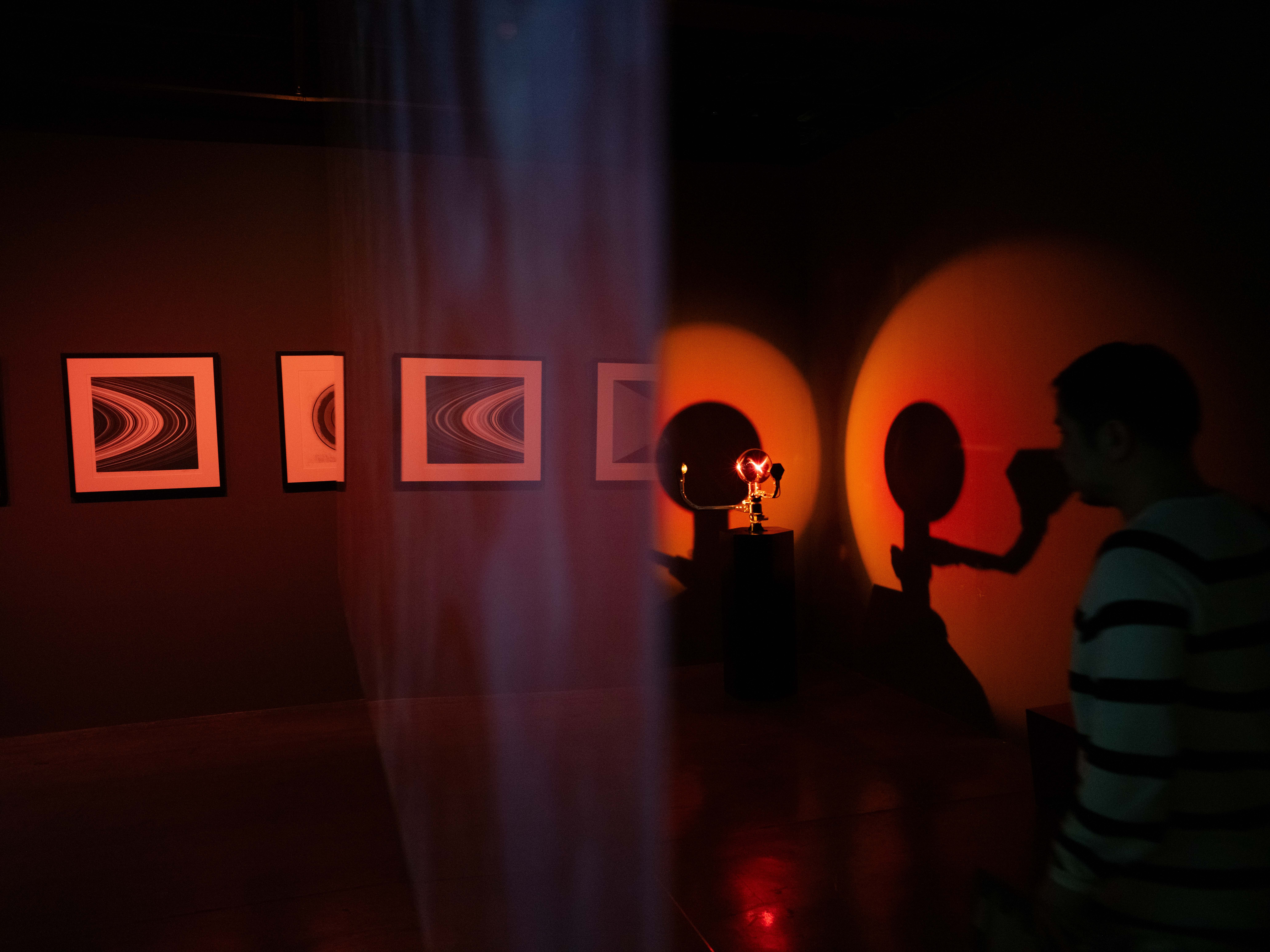
Sense
หากจะทำอะไรก็แล้วแต่ อย่าให้อารมณ์อยู่เหนือเหตุผล หลายคนคงเคยได้ยินวลีที่ว่านี้
ทว่าระหว่างการสนทนา ไทกิยืนกรานอย่างหนักแน่นว่า แนวทางการสร้างงานของเขาใช้ความรู้สึกและสัญชาตญาณมาก่อนสิ่งอื่นใด
“ในงานศิลปะ ศิลปินต้องเชื่ออารมณ์ ความรู้สึก เชื่อจิตสำนึกของตัวเองมากๆ ไม่รู้ว่ามากแค่ไหน แต่หากถามผม เวลารีเสิร์ชอะไรมาทั้งหมด สุดท้ายที่ลงมือทำมัน เราต้องลืมพวกนั้นไปเลย แล้วใช้สัญชาตญาณนำ อะไรที่เรารู้สึกกับมันมากๆ เราก็ใช้สิ่งนั้นมาเป็นตัวนำ”
หลายเสียงบอกตรงกันว่า หนังแนวทดลองขึ้นชื่อว่าดูยาก ทำความเข้าใจไม่ง่าย ยิ่งงาน Dark Was the Night ที่ประกอบขึ้นจากเศษเสี้ยวของสื่อต่างๆ หลายอย่าง เชื่อว่าคงมีคนกลัวว่า หากตัวเองไม่ใช่สายเนิร์ดประวัติศาสตร์ สังคม การเมือง รวมถึงดนตรีและหนัง อาจดูงานครั้งนี้ไม่ได้ความนัก
แต่ศิลปินบอกว่า ไม่ต่างกันกับตอนที่เขาสร้างสรรค์งาน เมื่อใครก็ตามที่เข้ามาชม เขาอยากให้ใช้อารมณ์นำสายตาและความคิด ในการสัมผัสสิ่งที่ซ่อนอยู่ตรงหน้า มากกว่ามามุ่งหาเหตุผล
“มันไม่ต้องเข้าใจก็ได้ หลายอย่างในชีวิตไม่มีทางเข้าใจได้ คุณก็ไม่เข้าใจอยู่ดี ไม่ว่าจะเรื่องของความสัมพันธ์ หรือว่าสิ่งที่เราทำอยู่ ณ ตอนนี้ เราก็ไม่เข้าใจหลายอย่าง
“อาจเป็นเรื่องของสภาวะความเหงา การถูกทอดทิ้ง ความรัก ความหวัง ความฝัน อะไรอย่างนี้ จริงๆ ไม่จำเป็นต้องเกี่ยวการเมืองก็ได้ การเมืองก็เป็นครอบครัว ภายในบ้านได้ ไม่ต้องหมายถึงการเมืองบนถนนหรือในรัฐสภา
“นี่แหละคือเรื่องของคอมมูนิตี้ การพยายามจะสื่อสาร ถ้าดูแล้วมีคำตอบหมด ผมว่าผมก็ทำหน้าที่ของผมได้แย่มาก ถ้าดูแล้วเข้าใจหมด แสดงว่าผมทำอะไรผิดละ ถ้าดูแล้วต้องการอยากมาคุยกับศิลปิน ทีมงาน อยากมาแชร์เสียงของตัวเอง แลกเปลี่ยนกัน อันนี้แสดงว่างานมันต่อยอดได้
“ไม่ว่าจะเป็นหนังทดลอง ไม่ทดลอง หรือศิลปะอะไรก็ตาม ไม่ควรต้องมานั่งคิด แต่ต้องรู้ว่าเรารู้สึกยังไงกับมัน”
ชมผลงานของ ไทกิ ศักดิ์พิสิษฐ์ ที่นี่
หรือสอบถามข้อมูลเพิ่มเติม ติดต่อ 092-455-6294 (ณัฐรุจา)
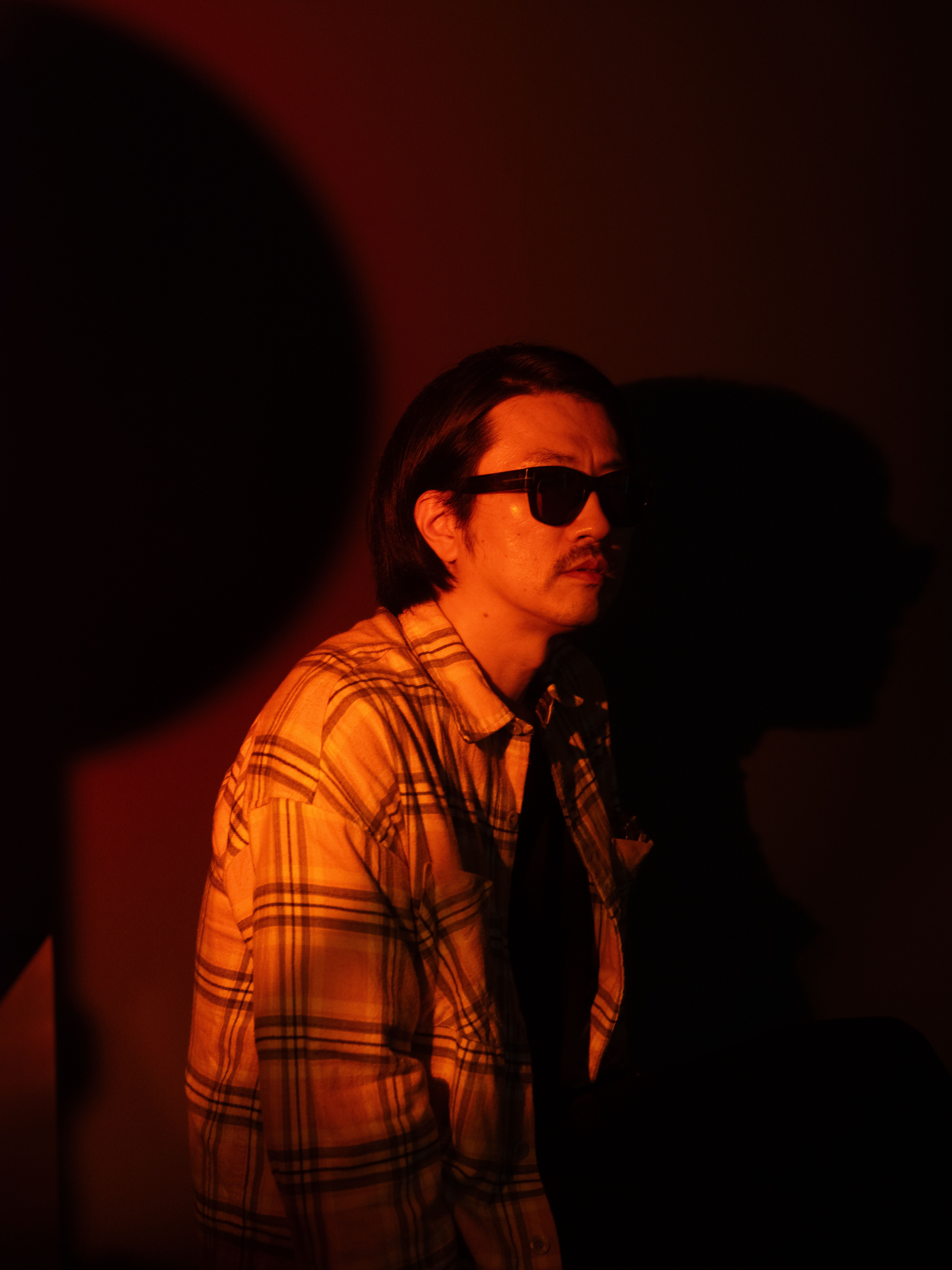
Taiki Sakpisit, a creative force who transcends boundaries, wears many hats. He’s a film director, a visual artist, and a film professor who ignites the imaginations of students at various universities. In the world of cinema, his name carries weight - a testament to the captivating stories he weaves. Both his intimate short films and his sprawling feature film have garnered a multitude of awards, both at home and abroad.
Evoking titles like Deathless Distance, The Age of Anxiety, Shadow and Act, A Ripe Volcano, and The Edge of Daybreak hint at the intriguing works you might already be familiar with.
A year prior, in May 2023, when dreams and aspirations were ablaze, he spoke to us about his passion and burning desire for his third solo exhibition at SAC Gallery.
In May 2024, fresh off the electrifying opening of his solo exhibition, Dark Was the Night, we reconnected with Sakpisit to delve into the heart of his work. We explored the wellspring of inspiration and the interwoven threads of concept that birthed this captivating fusion of video and installation art.
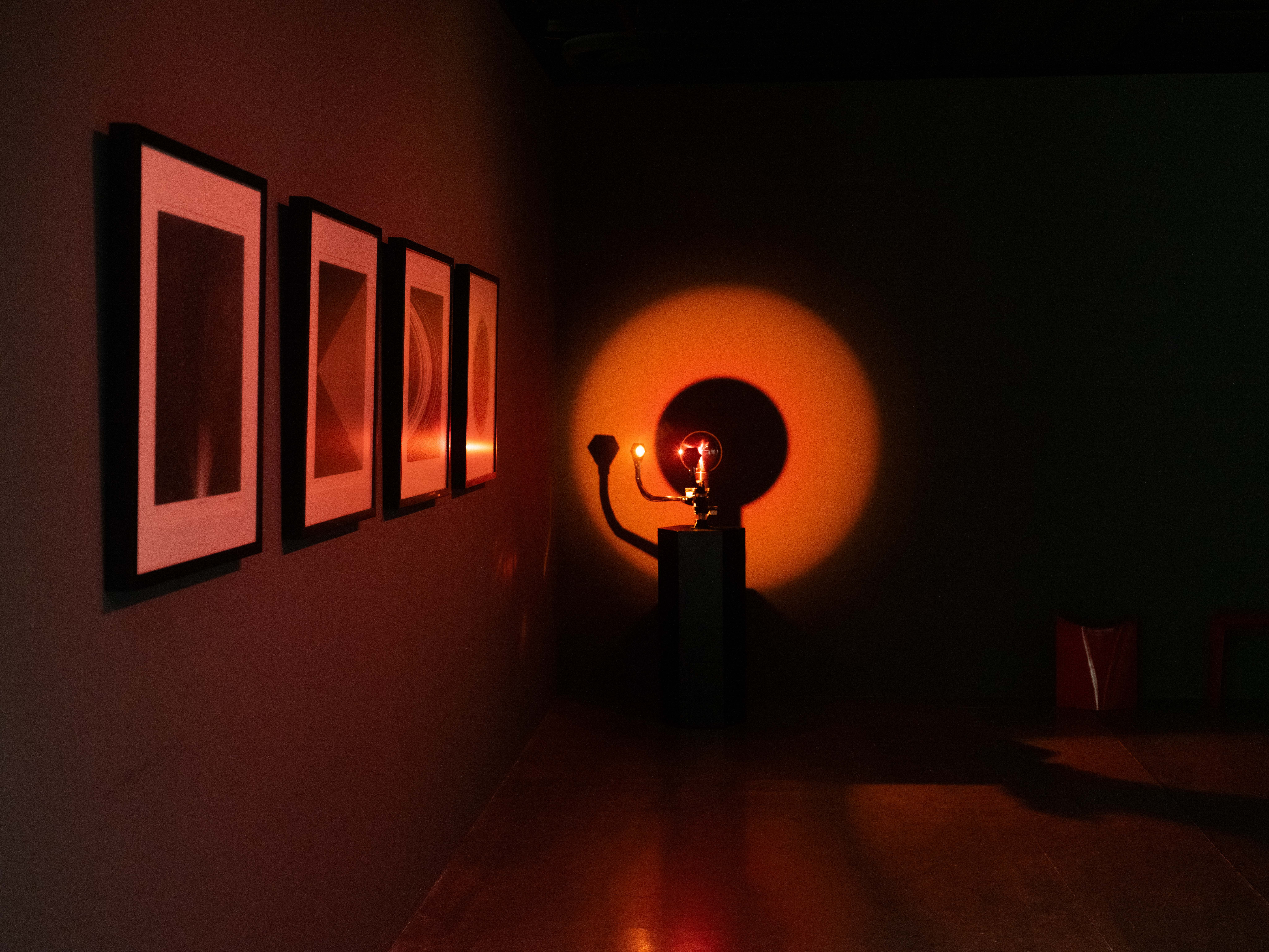
Sakpisit’s art goes beyond just understanding. It allows us to truly feel the complex web of emotions woven into his work. This blend of video and installation art takes us on a journey through the 6 October 1976 massacre, the deep family bonds, the bittersweet memories, the pain of loss, the raw emotions, and the stars.
More than just understanding Taiki Sakpisit’s world, we’re invited to feel it viscerally…
Dark Was the Night
A portion of the exhibition’s introductory text on one wall alludes to a momentous human event in 1977. NASA launched the “Golden Record”, a component of the Voyager project, carrying sounds from Earth – kisses, heartbeats, multilingual greetings, and various songs – into the cosmos. The mission was conceived as a bridge of communication between humanity and potential extraterrestrial civilizations.
For those familiar with Sakpisit’s work, his art often carries a political undercurrent. So, why does this exhibition connect to a space mission that took place half a world away and over half a century ago? Many who were alive then may have forgotten this story, while countless others have only recently entered the world. It’s a tale that’s likely far from the minds of most.
“I’m merely making an observation, connecting it to another world during the Cold War era when nations were vying for space exploration supremacy. The vision behind the Voyager mission was to communicate with extraterrestrial life. I see the use of art and music as examples, showcasing the beauty of human creation, not war or weaponry."
“Humanity has evolved to create such a thing, to convey human emotions and beauty. It's a celebration of art, truly magnificent.”
Just a year prior, freedom of speech in Thailand was a forbidden notion. The October 6th massacre unfolded in the heart of the capital, where innocent students were brutally silenced for daring to raise their voices. This remains a chronic wound in history, etched deeply in the collective memory of the nation and those who lived through the tragedy.

“Yet, in stark contrast, I draw a parallel to 1976, when students in Thailand were striving to express their political stances, to uphold the values of freedom, and to simply voice their thoughts and feelings. What were they fighting for? Fundamental human rights. Even for merely speaking out, they were labeled as instigators, subjected to propaganda, and tragically killed.”
In the same decade, yet on a different side of the world, the message conveyed was so starkly different.
Hypnagogia
In mid-May of the previous year, a glimmer of hope for Thai politics had ignited within the hearts of the people, like a beacon at the end of a dark tunnel. But just as swiftly as it had appeared, that light was extinguished, plunging the nation back into darkness, paralyzed and motionless, much like the sky during a solar eclipse.
Sharing the collective anguish of his fellow citizens, Sakpisit felt a surge of resentment welling up within him following the thwarted efforts to form a government after the election. He yearned to create a piece of art that would not only express his emotions but also serve as an outlet for the pain in his heart.
“The concept was much more intense back then”, the artist candidly revealed, referring to the concept behind his work at that time, which was imbued with raw emotion and a questioning of injustice.
However, as time passed, his emotions began to crystallize, transforming from anger and resentment into a focus on the human experience. Love, connection, and the separation of family members became infused into the various facets of his work.
Therefore, national politics gradually began to invite the audience to consider politics in smaller units such as the family, with Dusdi Banomyong Buntasnakul, the daughter of Pridi Banomyong, an important statesman of Thailand, portraying a character in the video art.

“I am interested in the state where many things are controlled by unseen forces, by a greater energy, such as the energy of the stars and the universe in this work."
“But how does this affect psychology and people’s mental states? How does the movement of light, the sudden darkening of the sky, and the disappearance of the sun affect feelings? It exemplifies a power greater than small individuals. I am interested in these phenomena—human sensations, touch, sight, hearing, smell, and taste. The way natural phenomena change and how it impacts the minds of characters or other entities fascinates me."
“I am just involving this particular family in the work, but in reality, it impacts every family. It's universal; it could be any family, anyone. When those in power or something greater have the power to dictate, we can’t control it. Even if we try, we are still overshadowed by this power.”
Dream
A crucial component in almost every film by Sakpisit is “sound”, which incorporates various music genres to represent different elements. By constructing soundscapes from multiple sources, he guides the audience to explore the thoughts and concepts within each work.
“Humans are always more sensitive to sound than sight, so we respond to sound more intensely than to visual stimuli”, the artist explains.
“Whenever I conceive a new project, I listen to music. Actually, I listen to music all the time, but during certain periods, I notice what I particularly enjoy and what I keep coming back to. These often serve as great sources of inspiration.”
From the Drone Metal band SUNN O))), known for their distinctive heavy, viscous bass and extended, rhythm-less sounds that resonate deeply into the auditory nerves, seemingly drawing the listener into a mysterious trance—this music represented his heart and emotions last year.
Now, he has transitioned to the softer tones of Dream Pop and Shoegaze, with their drifting, floating musical quality that evokes a sense of being in a dream. Music from bands like Cocteau Twins, This Mortal Coil, and My Bloody Valentine serves as the initial theme and foundation for his current work.
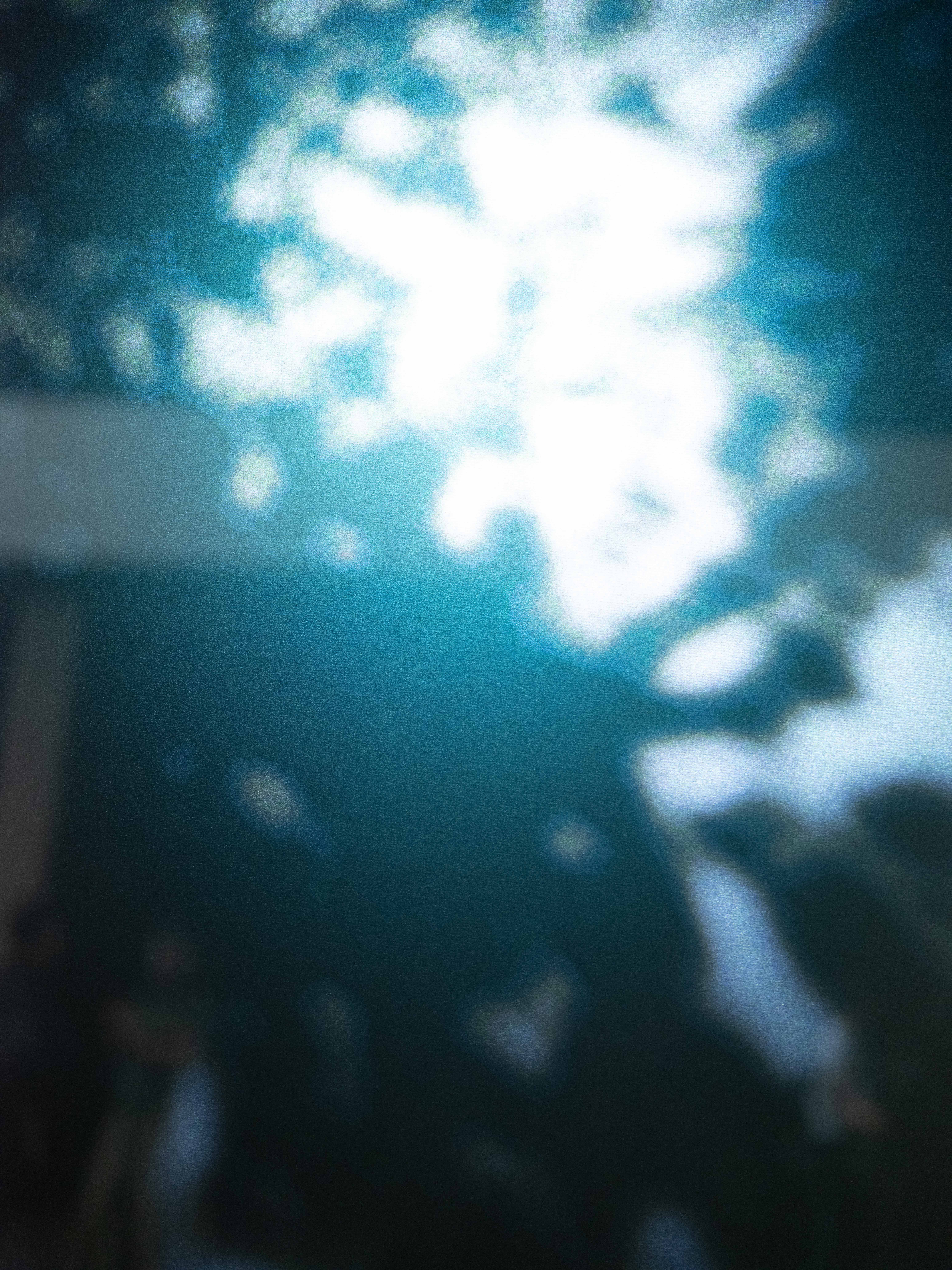
“Having this central point makes it easier for me to conceptualize various visuals and sounds. I know the mood should be around this level. It’s the visual I want to convey, and it must emerge from music like this.”
The name of the exhibition, Dark Was the Night, comes from one of the songs sent with the golden record on the Voyager project. It is an instrumental blues piece by Blind Willie Johnson, a blind African American singer, featuring only moaning and wordless humming that follows the melody. However, Sakpisit believes this conveys emotion better than words turned into sound. It’s a melody imbued with the sorrow of an African American born during a time of high racial discrimination.
Similarly, some songs by Cocteau Twins have lyrics that are not in any recognizable language, yet listeners can still perceive the emotions the artist wants to convey. This is something truly remarkable to him.
“The fact that we can’t hear clearly means there isn’t just one answer. I think this is the aesthetics I like the most. It allows for numerous interpretations and is timeless. It doesn't give you a single answer; it only raises questions. The answers come from the listeners or the viewers themselves. And while we might have one answer this year, five years from now, we might have a completely different answer.”
When Sakpisit got the Dream Pop sound as the emotional core, he slowly sculpted and created images that were ambiguous, overlapping, and flowed as if in a half-awake, half-asleep state. The rhythm aligned perfectly with the vintage Ukrainian lens he found, the HELIOS 44-2, known for its out-of-focus characteristic, creating blurry images that suited the storytelling of dreams, the semi-conscious state, and the complex layers of the world. He observed that these things often come in our thoughts as vague fragments, not always connected.
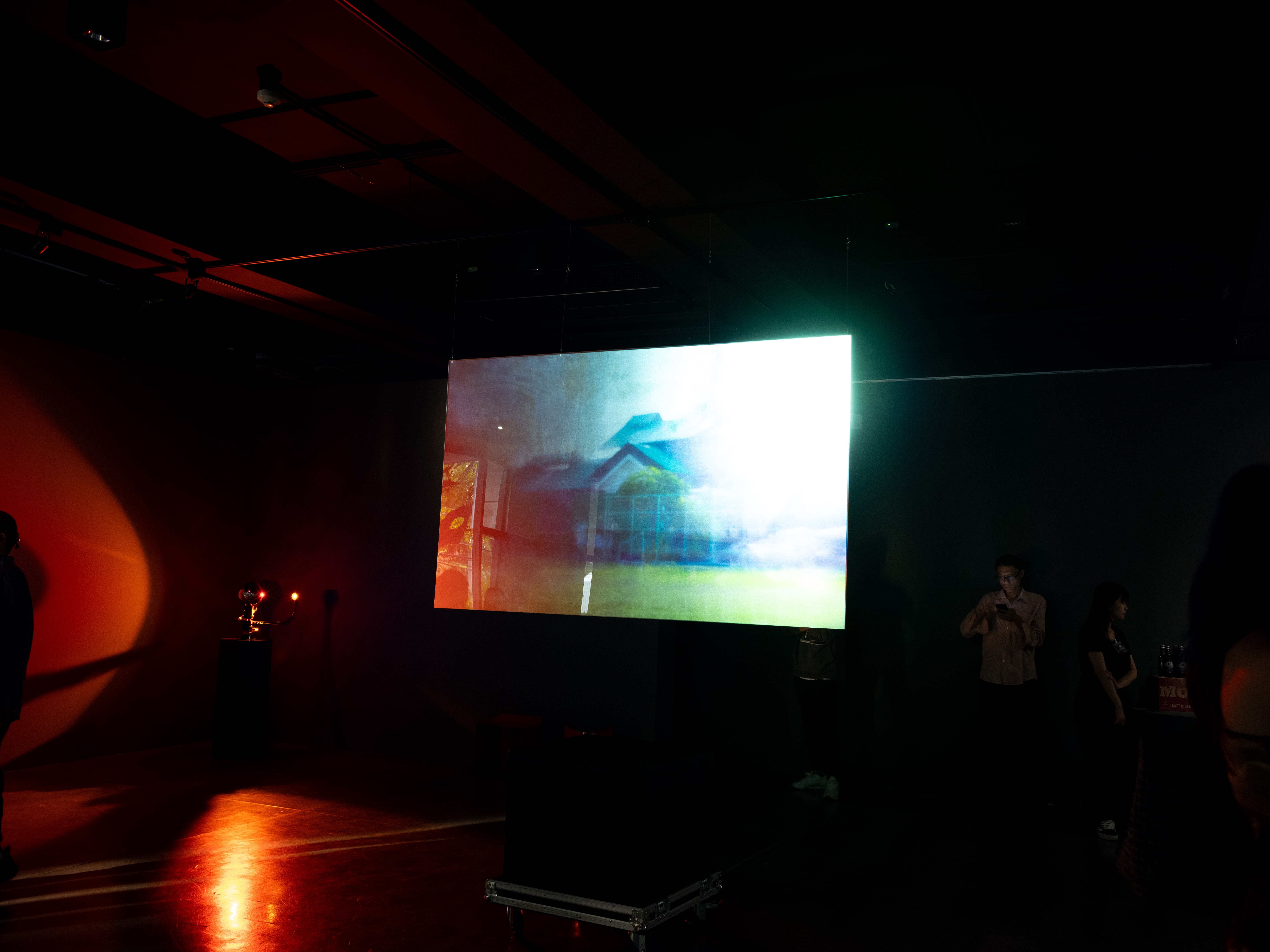
For this series, Sakpisit intended for sound to lead, allowing the visuals seen on the screen to gradually work with the images in the mind. Together, the images and sounds might evoke recent events or connect with our past experiences, akin to reminiscing about the past.
“Sometimes, the images we see aren’t necessarily what’s happening right in front of us. They could be images from our grandmother’s past or images from our memories. It’s like having two movies in one, where there’s the image in front of us and the image in our mind.”
Apart from the dual-screen video projection overlapping images, when combined with the soundscapes by Jin-Worramet Matutamtada, a Sound Artist who designed sound for several of Sakpisit’s works, merged with various accompanying artworks such as photo prints on silver metallic paper, etchings, sculpture, and light boxes, all of these elements come together to create and enrich the content of this exhibition.
“All objects have sounds alike. Jin didn’t design sound specifically for just the videos; he designed sound for every piece of artwork. If we look at moving sculpture with accompanying sound, it’s the same component—it's one and the same, it’s one single piece of work. The sound travels there just the same, especially in this gallery. I think the sound is a unique component. And if it’s used elsewhere, the sound changes just the same.”
Each of Sakpisit’s works is like a tailor-made piece, crafted to perfectly fit the context of its setting, aligning with the history and stories intertwined within. When the same video is presented in different locations, the audience's perception transforms accordingly.

“We try to make the work a conversation with that particular place. Right now, it’s in the form of the SAC Gallery. We adjust it to fit the proportions. When it goes to another place, we adjust it again. We see how the space is and then cut it out.” Sakpisit talks about the uniqueness of this work.
Sense
“If you’re going to do something, don’t let emotions override reason.” Many people have probably heard this phrase before. However, in conversation, Sakpisit firmly asserts that his approach to creating art prioritises feelings and intuition above all else."
“In art, artists must believe in emotions, feelings, and their own instinct a lot. I don’t know exactly how much, but if you ask me, when researching anything at all, ultimately, when it comes to actually doing it, we have to forget all of that and let our spirit lead. Whatever we feel strongly about, we use that as our guide.”
Many voices agree that experimental films are often labeled as hard to watch and not easily understood. The Dark Was the Night exhibition, composed of fragments from various media, leads many to believe that those who are not inclined toward history, society, politics, as well as music and film, might not comprehend this work.
However, the artist argues that it’s no different from when he creates a piece. Whoever comes to view it, he wants them to use emotions to guide their gaze and thoughts, to feel what’s hidden in plain sight, rather than seeking explanations.
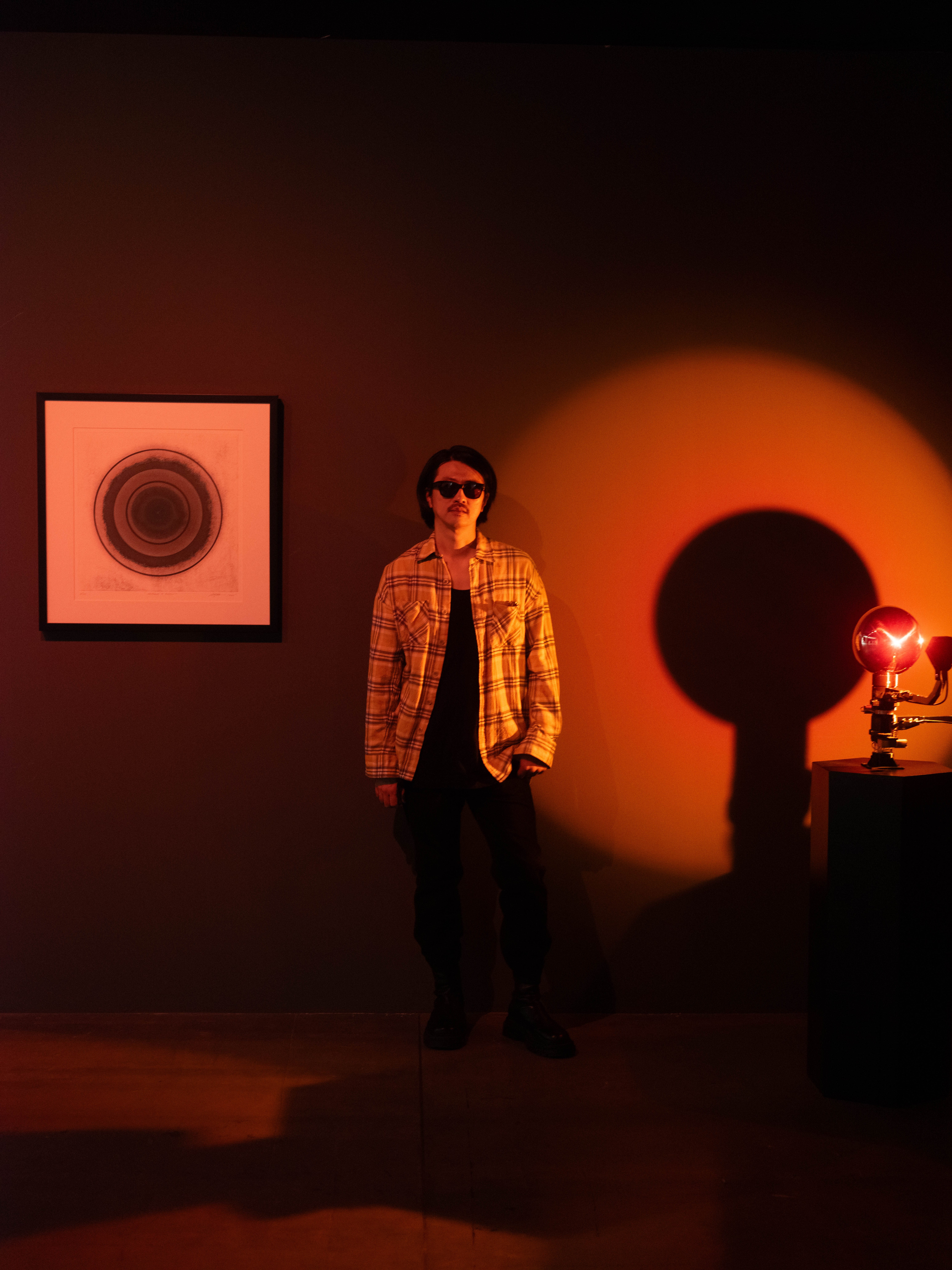
“It doesn’t have to be understood. Many things in life are not understandable. You don’t understand it well yourself, whether it’s about relationships or what we’re doing right now. We don’t understand many things."
“It might be about loneliness, abandonment, love, hope, dreams, things like that. It doesn’t necessarily have to be about politics. Politics can be a family matter, within the home. It doesn’t have to mean politics on the streets or in parliament."
“This is about community, attempting to communicate. If there are all the answers upon viewing, then I’ve done a terrible job. If everything is understood upon viewing, it means I’ve done something wrong. If after viewing, people want to come talk to the artist, the team, if they want to share their own voice, exchange ideas, then that shows the work has succeeded."
“Whether it's experimental films, non-experimental films, or any art form, we shouldn’t sit and think, but we should know how we feel about it.”
Discover Taiki Sakpisit's artworks here
For any additional questions or information, feel free to reach out 092-455-6294 (Natruja)
Tuesday - Saturday 11AM - 6PM
Close on Sunday, Monday and Pubilc Holidays
For more information: info@sac.gallery
092-455-6294 (Natruja)
092-669-2949 (Danish)
160/3 Sukhumvit 39, Klongton Nuea, Watthana, Bangkok 10110 THAILAND
This website uses cookies
This site uses cookies to help make it more useful to you. Please contact us to find out more about our Cookie Policy.
* denotes required fields
We will process the personal data you have supplied in accordance with our privacy policy (available on request). You can unsubscribe or change your preferences at any time by clicking the link in our emails.